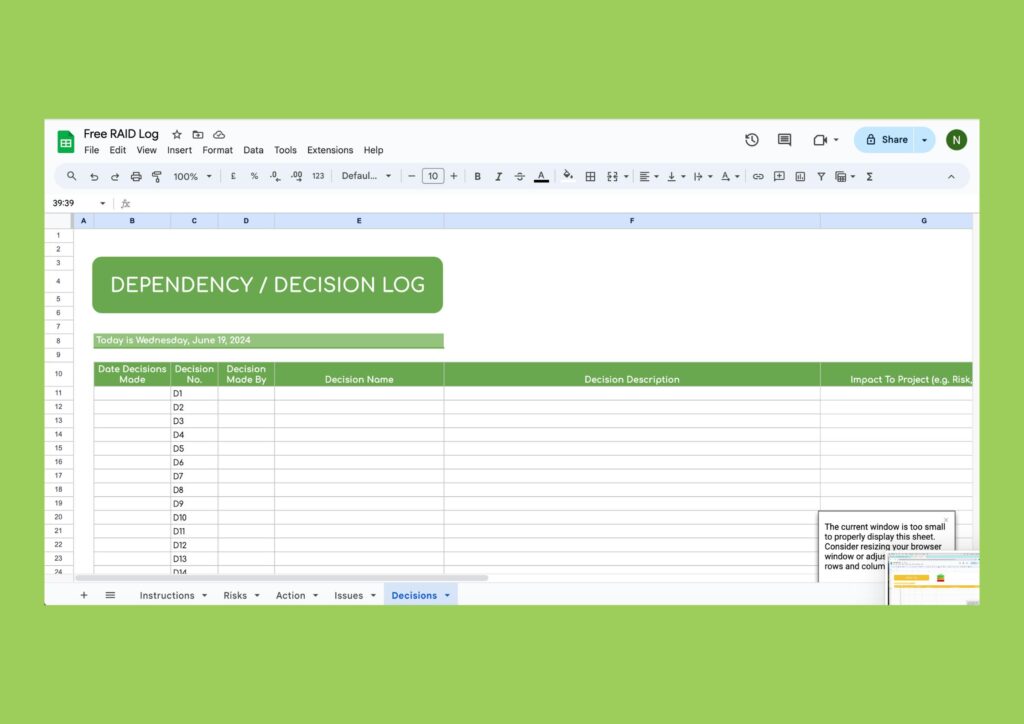The Cost of Poor Project Management
- 0 comments
- by gh7ft
Updated July 2024
In the fast-paced world of modern business, poor project management can be an invisible drain on an organisation’s success. From missed deadlines to runaway budgets, ineffective management of projects can lead to staggering financial losses, frustrated teams, and damaged reputations.
Table of Contents
Introduction
Whether you’re a scrappy startup, a mid-sized company navigating growth, or a sprawling public sector giant, the cost of getting it wrong is universal.
Let’s break down the toll that poor project management takes on organizations of all sizes—and how the public sector faces its own unique challenges.
The Ripple Effect of Poor Project Management
The consequences of mismanaged projects don’t stop at a single missed deadline or an overspent budget—they snowball.

The Domino Impact on Business Goals
When projects veer off course, they derail broader organizational goals. Product launches are delayed, services go undelivered, and teams find themselves scrambling to fix avoidable problems. What begins as a minor oversight quickly becomes a major strategic failure.
Wasted Resources and Burnout
Poorly executed projects lead to overworked teams and low morale. Employees stuck in an endless loop of rework, unclear priorities, and last-minute changes are likely to burn out—and leave. And it’s not just about people. Time, money, and energy are sunk into efforts that don’t deliver value, leaving businesses with little to show for their investment.

Small Businesses: When Every Penny Counts
Small businesses, often strapped for resources, frequently underestimate the importance of structured project management.
Lack of Formal Processes
Without dedicated project management, tasks are often assigned informally, and deadlines are treated as fluid. This might work for a while—but as complexity grows, cracks start to appear.
Consequences of Informal Practices
When deadlines slip or deliverables don’t meet client expectations, the impact is immediate. Dissatisfied clients, lost contracts, and a tarnished reputation can deal devastating blows to a small business. In many cases, it’s the difference between surviving and thriving.
Medium Enterprises: The Growing Pains
As businesses scale, their project management needs become more sophisticated—but the transition isn’t always seamless.
Scaling Without Strategy
Medium-sized companies often find themselves in limbo. They’re too big for informal practices but too small to have robust processes like their larger counterparts. This lack of strategy results in misaligned teams and duplicated efforts.
The Middle Ground Risk
At this stage, inefficiencies are costly. Scope creep, unclear roles, and untracked progress can lead to projects that spiral out of control—consuming resources and delivering subpar results.
Large Organizations: Bigger Budgets, Bigger Risks
With complex hierarchies and multi-million-dollar projects, large organizations face their own set of challenges.
Complexity Overload
In big businesses, multiple departments and stakeholders often have competing priorities. Without clear oversight, projects can become entangled in bureaucracy, leading to miscommunication and delays.
The High Cost of Failure
When large-scale projects fail, the losses are monumental. Case in point: the publicized IT system overhauls that cost millions yet deliver little value. Beyond financial costs, these failures damage trust—both internally and externally.
Public Sector Organizations: A Special Case
Public sector projects occupy a unique position in this discussion. They carry the weight of public scrutiny and the moral responsibility of managing taxpayer money wisely.
High Stakes with Public Money
Ineffective project management in the public sector has far-reaching implications. Whether it’s an infrastructure project or a healthcare initiative, failure isn’t just a financial issue—it impacts lives and communities.
Bureaucracy and Red Tape
Public sector projects often contend with slow decision-making, multiple approval layers, and rigid processes. This environment breeds inefficiency, delays, and skyrocketing costs.
Case Studies of Failure
High-profile failures, like abandoned transport projects or delayed IT systems, highlight the dire consequences of poor planning and execution. The fallout? Frustrated citizens and eroded trust in government institutions.
Quantifying the Costs
The price of poor project management is more than just financial—it extends into the intangible and long-term.
Financial Costs
Projects running over budget drain organizational funds that could be better invested elsewhere. Rework, inefficiencies, and resource mismanagement pile up, leaving businesses scrambling to plug holes.
Opportunity Costs
Every failed project is a missed opportunity. Delays in bringing products to market or implementing services mean lost revenue, reduced competitiveness, and stifled innovation.
Intangible Costs
Beyond money, the damage to an organization’s reputation can linger for years. Internally, trust erodes, and teams lose motivation. Externally, clients, investors, and stakeholders question the organization’s capability.
How to Avoid the Pitfalls
The good news? Poor project management isn’t inevitable. With the right tools, mindset, and expertise, organizations can steer their projects to success.
Invest in Skilled Project Managers
Experienced project managers are worth their weight in gold. They bring clarity to chaos, ensuring projects stay on track and within budget.
Adopt Proven Methodologies
Frameworks like Agile, Waterfall, and hybrid approaches offer a roadmap to success. Choosing the right one depends on the organization’s needs, but having a clear methodology is non-negotiable.
Use the Right Tools
Project management software like Asana, Trello, or Microsoft Project can streamline workflows and enhance collaboration, making it easier to track progress and address issues in real time.
Build a Culture of Accountability
Ultimately, project success depends on the people driving it. Cultivating a culture where everyone takes responsibility and communicates openly is critical.
Conclusion
Poor project management is more than just a nuisance—it’s a liability that no organization can afford. From small businesses to public sector giants, the cost of getting it wrong extends far beyond the balance sheet. But with strategic planning, skilled leadership, and the right tools, organizations can turn their projects into powerful engines of success.
Because when it comes to project management, the old adage holds true: fail to plan, and you plan to fail.
Written by

Located in Lancashire, England, Nayla is the founder and Project Manager of Transformation PM, a consultancy dedicated to helping businesses and project managers transition projects from concept to successful delivery. With a focus on efficiency and effectiveness, Transformation PM is a beacon of innovation in project management.
With a decade of experience in product management and eleven years in supply chain and inventory management, Nayla has expertise in aerospace, pharmaceuticals, retail, and the public sector. She has a proven track record of implementing transformational changes, sustainable pharmaceutical packaging, and innovative retail products.
Before founding Transformation PM, Nayla contributed to numerous high-profile projects. She holds a BA (Hons) in International Business and Marketing, is PRINCE2 Practitioner certified, and is pursuing PRINCE2 Agile certification.
Nayla's hands-on approach simplifies workplace bureaucracy and breaks down complex processes, making projects easier to complete. She is passionate about empowering teams and streamlining workflows to drive success and innovation.

- Click and edit anything
- Customise to match your branding
- Share and present
You might also be interested in

Add Your Heading Text Here
Lorem ipsum dolor sit amet, consectetur adipiscing elit. Ut elit tellus, luctus nec ullamcorper mattis, pulvinar dapibus leo.
Read more >

Add Your Heading Text Here
Lorem ipsum dolor sit amet, consectetur adipiscing elit. Ut elit tellus, luctus nec ullamcorper mattis, pulvinar dapibus leo.
Read more >

Add Your Heading Text Here
Lorem ipsum dolor sit amet, consectetur adipiscing elit. Ut elit tellus, luctus nec ullamcorper mattis, pulvinar dapibus leo.
Read more >

Add Your Heading Text Here
Lorem ipsum dolor sit amet, consectetur adipiscing elit. Ut elit tellus, luctus nec ullamcorper mattis, pulvinar dapibus leo.
Read more >

Add Your Heading Text Here
Lorem ipsum dolor sit amet, consectetur adipiscing elit. Ut elit tellus, luctus nec ullamcorper mattis, pulvinar dapibus leo.
Read more >

Add Your Heading Text Here
Lorem ipsum dolor sit amet, consectetur adipiscing elit. Ut elit tellus, luctus nec ullamcorper mattis, pulvinar dapibus leo.
Read more >

BOOST YOUR PROJECT SUCCESS WITH OUR FREE RAID LOG
Our RAID Log Template is designed to help you effectively manage risks, assumptions, issues, and dependencies, ensuring no detail is overlooked. You will receive; Risk Register, Assumptions (Actions) log, Issue log, Decision (Dependency) log. Increase team collaboration and share your RAID log seamlessly with your team, fostering communication and transparency.
© TRANSFORMATION PM | PRIVACY POLICY | TERMS AND CONDITIONS






